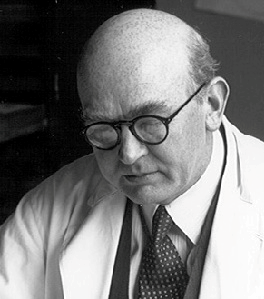Related Research Articles

Georg Arthur Jensen was a Danish silversmith and founder of Georg Jensen A/S.

Vivianna Torun Bülow-Hübe, often known simply as Torun, was one of Sweden's most important 20th century silversmiths and a master jeweller. She is the first female silversmith to have become internationally noted. Among her most important works are the watch "Vivianna," the bracelet "Mobius," and the earrings and necklaces "Dew Drop."

Jens Harald Quistgaard was a Danish sculptor and designer, known principally for his work for the American company Dansk Designs, where he was chief designer from 1954 and for the following three decades.

Kay Bojesen was a Danish silversmith and designer. He is best known for creating wooden animals, especially his wooden monkey which was exhibited at the Victoria and Albert museum in London in the nineteen-fifties, and which today is considered a design classic.
Ib Georg Jensen was a Danish ceramist, designer and author by the alias 'Muk'.

Evald Nielsen was a Danish silversmith and long-standing master of the Goldsmith's Guild of Copenhagen and one of the leading men behind the organizing of the Danish gold- and silversmiths.
Rigmor Andersen was a versatile Danish designer, educator and author. Above all she is remembered for maintaining the traditions of Kaare Klint's furniture school at the Royal Danish Academy of Fine Arts.

Johan Gudmann Rohde was a Danish painter, lithographer and designer. He was the principal founder of Den Frie Udstilling, established in 1891 to allow artists to exhibit works which did not fall within the Academy's selection criteria.

Vilhelmine "Ville" Jais Nielsen was a Danish painter and sculptor. She is remembered for the many portraits of women she painted while in Sweden during the Second World War, marked by strong brushstrokes and sensitive lighting effects. Her husband was the artist Jais Nielsen.

Georg Jensen A/S is a Danish designer company with focus on silverware. It was founded by silversmith Georg Jensen in 1904.
Inger Frimann Hanmann was a Danish artist, specializing in painting and enamelwork. Her younger daughter Charlotte Hanmann is also a photographer, painter and graphic artist. Inger Hanman's best known enamel art works are displayed in Copenhagen Airport and Danske Bank.
Frances Wildt Pavlu, also known as Frances Pavlu and Hilda Pavlu, was a contemporary art jeweller and educator.

Harald Nielsen was a Danish designer of silver for Georg Jensen. The younger brother of Georg Jensen's third wife, he joined the company at 17 as a chaser's apprentice but later became one of the company's leading designers in the 1920s and 1930s and Jensen's closest colleague. One of his most well-known designs being the pyramid flatware pattern. In the early 1950s he headed the company's apprentice school and in 1958 became its artistic director.
Karen-Margrethe (Kim) Naver is a Danish designer and textile artist, specializing in weaving and tapestry. Inspired by both coarse Polish techniques and patterns and materials from the Orient, she has been successful in creating textiles for industrial furniture manufacturers, as well as for domestic use. She is recognized as one of Denmark's leading figures in Danish modern textile art. Her silver jewellery designs have been marketed by Georg Jensen A/S.

Henning Koppel was a Danish artist and designer. He is most known for his work for Georg Jensen in the years after World War II. He also designed porcelain, glass (Holmegaard) and lamps.

A. Michelsen was a leading Danish jeweller founded in 1841 by Anton Michelsen in Copenhagen. It was responsible for executing all Danish orders. It was absorbed by Georg Jensen A/S in 1985.

Wilhelmina Wendt, commonly known as Tiddit, was a Swedish silversmith. She was the first woman in Sweden to be granted the title of "master silversmith". From the late 1920s, she designed trays, serving dishes, bowls, jugs and jewellery. In the mid 1940s, she settled in Perstorp where she combined her father's black insulation material "isolit" with her own thin silver designs, producing artefacts in what she called "silverisolit".
Birte Stenbak née Jensen is a Danish goldsmith and jeweller. After an apprenticeship with Poul Bang in the 1950s, she worked in Bent Stålgård's workshop. In 1975, together with her friend Birthe Jørgensen, she established a studio and shop in central Copenhagen, where she created imaginative jewellery consisting of gemstones, silver, gold, pearls and other materials. From 1983, she ran the business alone in what became known as Aladdin's Cave. Collaborating with the artist Tage Andersen, in 1988 she created a large table decoration for Rosenborg Castle. Since the mid-1970s, her work has been exhibited at home and abroad.

Märta Gunilla Matilda af Ekenstam (1880–1939) was Sweden's first female silversmith and creative metal worker. In 1913, after studying in Munich, she established her own studio in Malmö where she worked in the Jugendstil with materials including gold, silver, ivory and copper. In 1928, she married Carl Jarming who ran an art firm in Malmö. The two emigrated to the United States, settling in Pasadena. She exhibited at the 1937 World Fair in Paris and the 1939 World Fair in New York. Works by Ekenstam are in the permanent collection of Sweden's National Museum.
Inga-Britt (Ibe) Dahlquist (1924–1996) was a Swedish silversmith who established a workshop in Visby on the island of Gotland where she worked for many years, collaborating with her neighbour Olov Barve. A necklace combining silverwork and fossils she found on the beach is in the permanent collection of the National Museum of Sweden.
References
- 1 2 3 4 5 Sass, Særen (2003). "Inger Møller (1886 - 1979)" (in Danish). Kvinfo. Retrieved 28 June 2021.
- 1 2 3 4 Maarssø, Vibeke (2010). Hvis det kan more dem, saa-: rundt om nogle af de første kvindelige sølv- og guldsmede i Danmark. BoD – Books on Demand. pp. 44–. ISBN 978-87-7114-127-6.
- ↑ "Inger Møller, moderne kasserolle af sterlingsølv, 1942" (in Danish). Vad är den Värd. 11 March 2015. Retrieved 28 June 2021.